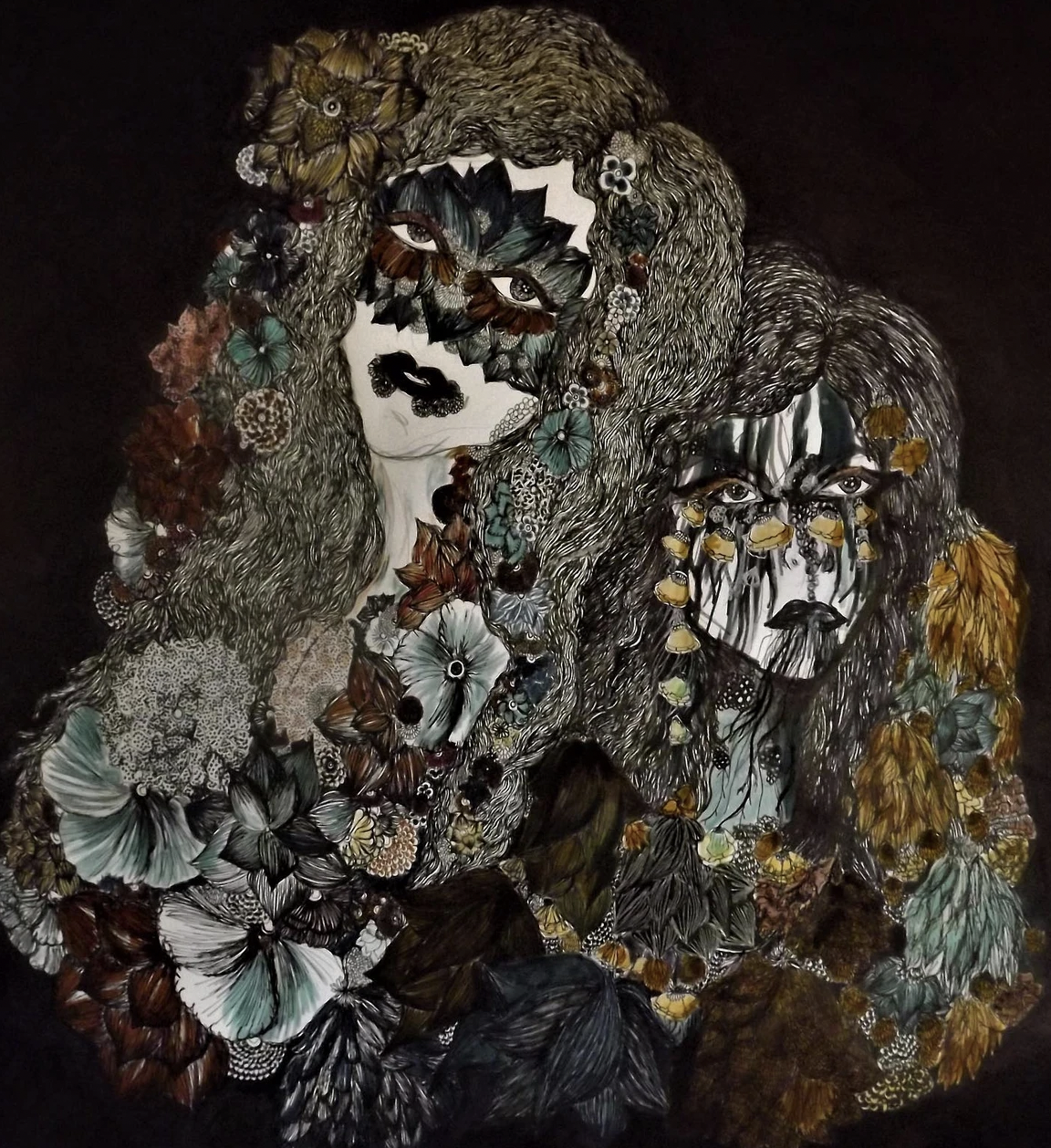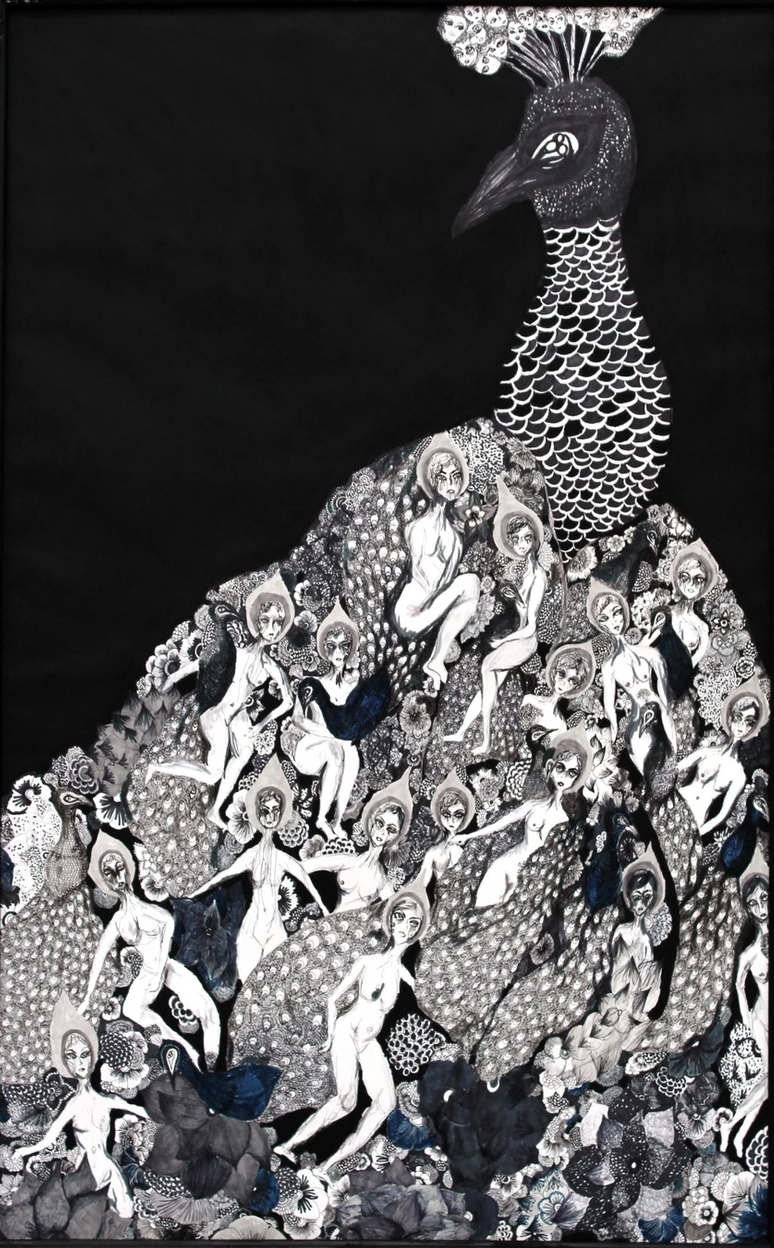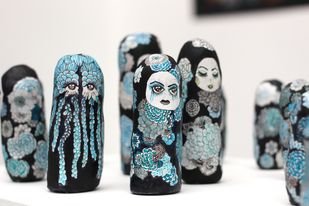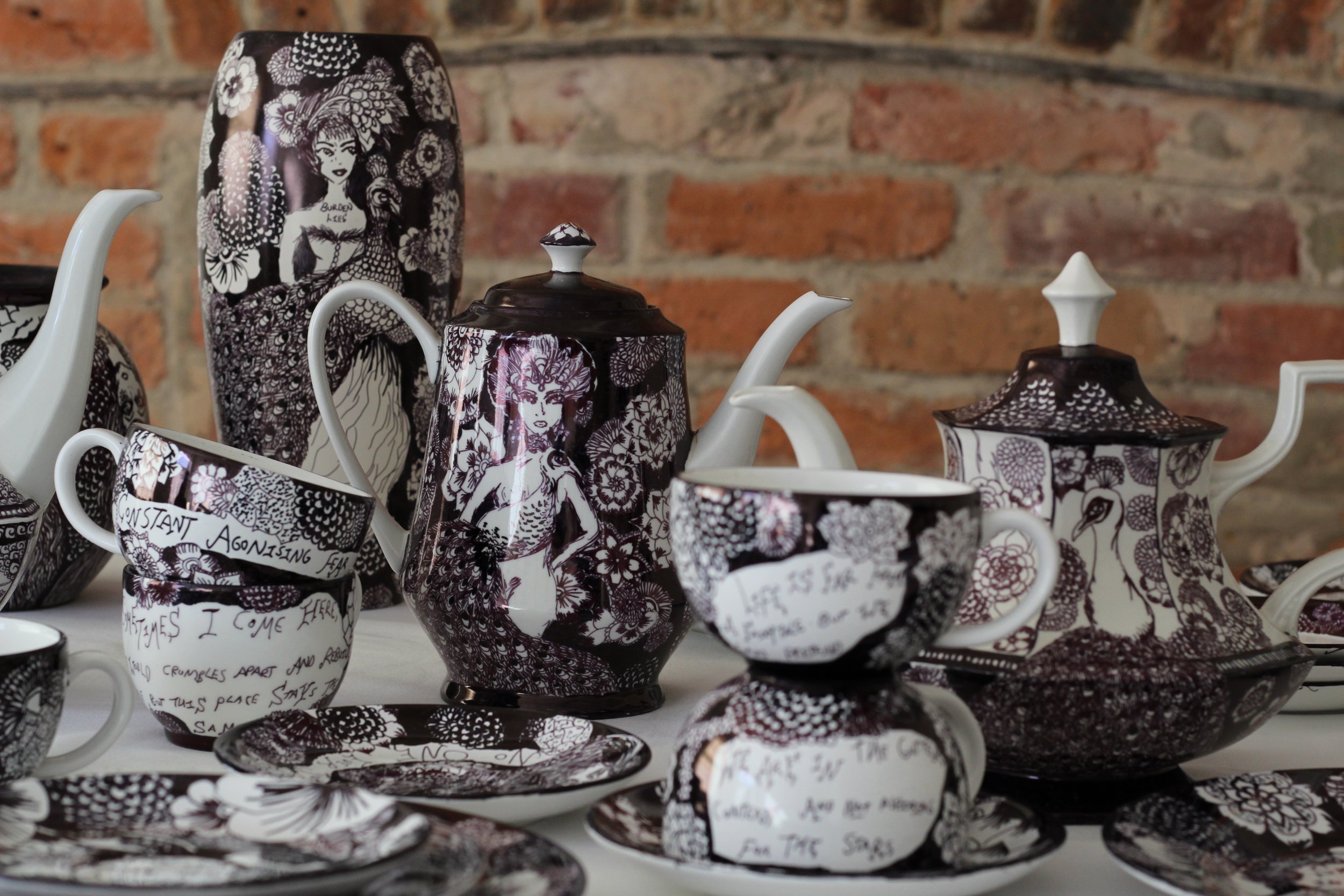ARTIST INTERVIEW: Molly Lambourn
Tell me about yourself. What inspired you to become an artist?
It was the realisation that drawing for me was a need, not a want; it was something I felt I needed to do with my life to be happy, fulfilled and to feel free. I have always drawn. Since I was a child, I would get so excited if my mum bought me a new set of pencils or pens to use, and I would eagerly try them out. I had an interesting path to art, my work exhibited with the Turner Contemporary when I was 17 but I didn’t end up going to art school, I went to the University of Warwick to study History, and I was lucky enough to get onto an internship programme with a bank. I spent my summers in banking headquarters, learning about the corporate world of business and spending my time quite far away from anything creative. I got to my third year of University and had a moment of realisation that I was quite unhappy, that I had a need to create that I had been ignoring. That year I took three big steps to change my life; I applied for business funding to start a creative product business, I applied to do a masters in Fine Art and I also applied to spend a summer in India volunteering. I achieved all three and it set up my next steps very well, I did my masters part-time and took two years fully immersing myself in the world of art and creativity.
Your pieces are inspired by literature and womanhood, what do you find entrancing about painting these works?
My work is fuelled by emotion, most recently I use a strong emotion as the catalyst to begin drawing a piece. I often get an image in my mind and cannot rest until I have put that idea to paper, usually a quick pencil sketch which is done in around 5-10 minutes, which captures the whole piece, the main subject and background. I then will spend hours putting pen to paper, building up a dark and delicious world of detail, flora and fauna to surround my subject. My work is usually semi or completely autobiographical and is informed by my life experiences. Whether this be the emotion that is given to create the piece, or the female subject may be a version or representation of me.
Literature permeates my work, in particular the poems of Robert Frost and plays like a Midsummer Night’s Dream. My work is playful, dark and magical but also has the brutal darkness that you might find from a Frost poem, where matters of the mind and escapism are discussed. The imagery of the woods is important to me, it is the dark and vast world where I can explore my emotions with complete rawness. Most recently I find myself drawing my body suspended in water, images of women in trees and a lot of symbolism about rebirth and new beginnings. The fascination with women slowly merging into trees comes from Ovid’s Metamorphoses with the story of Daphne.
Your self portrait, ‘In Flowers’, has gained a lot of attention, leading you to be selected for the RBA Rising Stars Exhibition. What was your creative process from start to finish of this piece? What is the narrative? How does this work reflect you as an individual?
In Flowers was produced at a time where I felt I couldn't be honest with people about struggling with my mental health. The narrative relates to womanhood. My life experience is important to me because it is documenting one unremarkable women’s life and world, and taking the opportunity to explore moments, experiences or emotions that often get overlooked in women’s lives. There is something profound about putting pen to paper and asserting the worth of your story in the world. My drawing helps me get through my darkest moments, my pen is my constant and faithful companion in moments of doubt, pain and joy - it documents it all and helps me create a beautiful world.
Your vast portfolio includes work using many different mediums. What inspired you to create a Russian Doll series? How does your process differ compared to creating one of your two-dimensional pieces?
I have a lot of fun creating 3D work, I created the Russian dolls by hand and they have beautiful, organic and quite bumpy textures. The difference between the 2D and 3D is the precision element; with 3D I do not overly plan, I work freehand and go with the momentum of the moment to draw and create pattern.
What is your favourite medium and why?
I love working with pen, I enjoy the intricacy of detail I can achieve with it and I often feel like drawing can be seen as the process to something ‘substantial’, whereas I enjoy using it as the medium of choice for my final pieces. Black pen especially feels dark and delicious, you can achieve brilliant textures and patterns. I also like the permanency and the challenge of making mistakes appear part of the artist’s plan.
Thinking about the most recent piece you created, what was your creative process? How did the work develop?
I am working on a series of drawings at the moment. The process began for me as a moment of creative flow and a huge flow of ideas which I needed to fulfil on paper. I took a pad of A2 paper and obsessively, but quickly, drew out about 20 ideas on pages in pencil, spending no longer than 10 minutes on each, but for each one establishing the key subject of the piece. I am currently inspired by images of self in the forest space and exploring my recent emotions and path to independence. This has involved interesting images of women flowing down rivers, submerging into trees and exploring forests. So yes, there is an initial flow of ideas and usually my work forms bodies thematically.
Welcome to my World was an obsessive phase of drawing on ceramics, resulting in a 34 piece installation, the Russian dolls built up to an army of 80. I am enjoying having a phase in 2D, I like to have a few pieces on the go and to work between them, they have conversations with each other and I can go back and fourth into different ones, gradually building up a wealth of detail.
Out of all your works, which piece are you most proud of and why?
I am most proud of Welcome to my World. It exhibited with the Turner Contemporary and then moved on to the Royal Scottish Academy. Both experiences felt surreal and it was emotional to see work which came completely from the heart and spoke so honestly about mental health in a fine art setting. It was a 34 piece ceramic installation that grew from one vase and became an obsession. Each piece was a portal into my mind and innermost thoughts and feelings at that moment. It is important to speak truthfully, and Welcome to my World was a documentation of the thoughts and feelings of a young woman, otherwise insignificant in society; yet those core moments and emotions displayed are universal to so many.
Which artist would you say inspires you the most? What would you ask them if they were sat next to you now?
I am most inspired by Grayson Perry, his work is prolific and knows no bounds of medium or topic. I remember going to his show at the Turner Contemporary in Margate as a teenager and feeling completely in awe. He made me feel like an artist could do anything and did not have to be restricted to one medium. I enjoy using ceramics and introducing things that shouldn’t be fine art into fine art settings. I think it makes a statement about class, who should be where and who is allowed to consume art. Anyone should be, anyone should feel comfortable in galleries. Perry has always made me feel at ease in the art world, he invites you into his work and it is raw, but not without depth if you are willing to pause and empathise. It has wit and charm and is humble. I’ve seen my practice of drawing crystalise in 2D, 3D and most recently performative drawing through film. I would ask him if he wanted to draw with me over a cup of tea! It’d be fun to have a conversation through art together. I could see us chatting, writing dialogue and drawing characters on a page together.
Why do you think art is important in society?
Art is fundamental to society, and it is everywhere to me. It can be seen when you get home from work and watch Netflix, when you scroll Instagram, read magazines, books or listen to music. Creativity is intrinsically linked to our wellbeing, identity, and sense of who we are. I believe there is knowledge we obtain from art that we cannot get elsewhere, it has the power to cut through and make you feel about universal topics. I think whether we define ourselves as creative or not, we all enjoy art and consume it in some form. Art is a way to process life and also sometimes, escape from our everyday reality - it brings us joy! Art is a way for creatives to process themselves, their thoughts, feelings and express it to others. It can be a way to challenge the way others think or feel, it can be a comfort and feel like a hug from a stranger. It is hugely important for wellbeing and in settings such as; museums or galleries, it can become a place for connection, interaction and bonding through a mutual appreciation and understanding of the setting and work around us.










